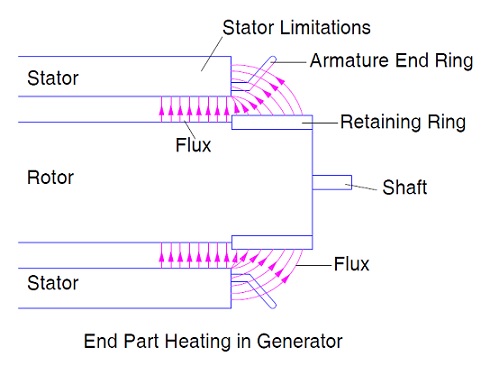End Part Heating is localized heating at the end region of stator core of Generator. This heating is a result of eddy current loss in the laminations of stator core due to end turn flux of armature winding. This heating imposes a limitation on the operation of Synchronous Generator know as End Part Heating Limit. If you ever get a chance to have a look on the Generator Capability Curve, you will notice end part heating as one of the limit.
This causes higher leakage flux linkage (since Ø = BA) by the stator core lamination which subsequently induces eddy current. These eddy current produces I2R loss and leads to heating of end part.
End part heating is thus caused by mainly end turn leakage flux. This heating is less under overexcited generator. Why?
When generator is over excited, the retaining ring of Rotor is saturated which offer high reluctance path to the leakage flux. Therefore the leakage flux to the stator reduces and hence end part heating. But when generator is under-excited, the retaining ring of Rotor is not saturated. Hence retaining ring offer low reluctance path to the leakage flux. Also during under-excited condition, the flux produced by armature current adds to the flux produced by the field current; therefore, the end turn flux enhances the flux axial in the end region. This causes more heating in end part of generator and can severely limit the generator output.
Thus we see that, end part heating imposes a limit on generator output under under-excited condition.

nice explanation. thank you